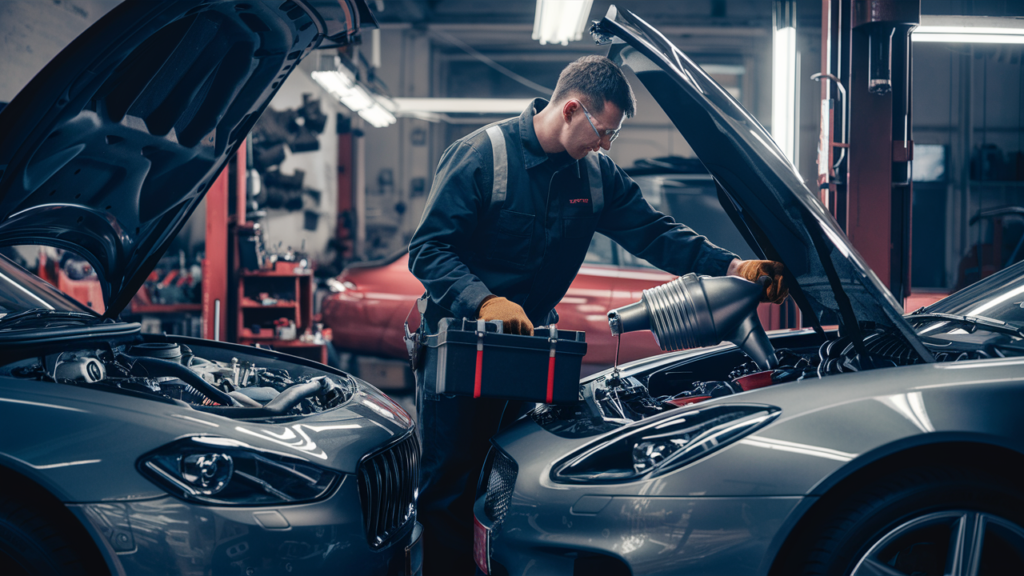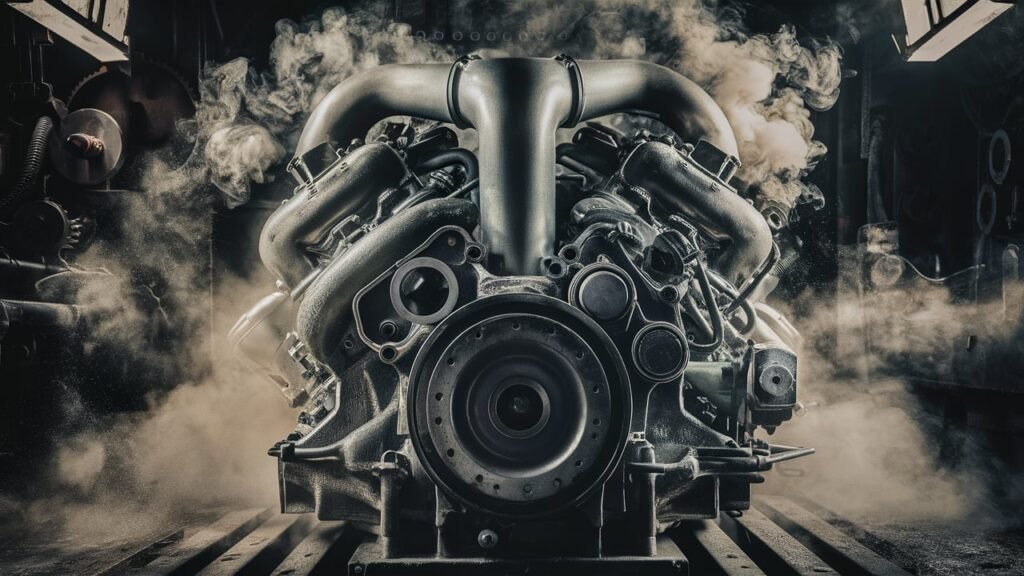
Demystifying Car Engine Differential Fluid: What You Must Know
Differential fluid, also known as gear oil or differential oil, is a specialized lubricant designed to cool and lubricate the internal components of the differential in a vehicle’s drivetrain. It plays a crucial role in maintaining the health and performance of the differential system, ensuring smooth power transfer to the wheels and minimizing wear on the gears and bearings.
Key Functions of Differential Fluid:
- Lubrication: Differential fluid lubricates the clutch packs, bearings, and gears within the differential, preventing metal-on-metal contact and reducing friction, which can lead to premature wear and damage
. Cooling: The fluid helps to dissipate heat generated by the differential’s moving parts, preventing overheating and damage to the components. Corrosion Resistance: Differential fluid provides a protective coating on the metal parts, preventing rust and corrosion from forming.
Types of Differential Fluid:
- Mineral Oil: A natural, crude oil-based fluid used in standard differentials.
- Synthetic Differential Fluid: Created with chemicals, fine-tuned for optimal performance, and often used in high-performance or extreme-duty applications.
Importance of Differential Fluid Maintenance:
- Regular Changes: Differential fluid should be changed every 30,000 to 60,000 miles, depending on the vehicle manufacturer’s recommendations
. Signs of Failure: Low fluid levels, dirty or contaminated fluid, or unusual vibrations and noises can indicate the need for a differential fluid change.
Differential fluid is a critical component in maintaining the health and performance of a vehicle’s drivetrain. Its proper functioning ensures smooth power transfer, minimizes wear, and prevents overheating. Regular maintenance, including fluid changes, is essential to extend the life of the differential system and prevent costly repairs.
In the intricate ecosystem of a car’s drivetrain system exists a critical component often overlooked by many – the car engine differential fluid. This elusive yet indispensable fluid plays a pivotal role in ensuring the smooth operation and longevity of your vehicle’s differential unit.
Defined as a specialized lubricant formulated to meet the demanding requirements of differentials, this fluid acts as the lifeblood of your car’s drivetrain, facilitating the crucial task of allowing wheels to rotate at varying speeds while maintaining necessary torque distribution.

Understanding the nuances and intricacies of car engine differential fluid is paramount for auto enthusiasts, mechanics, and car owners alike. Without delving into this realm, one fails to grasp the significance of differential fluid in safeguarding against premature wear and tear, overheating, or catastrophic failures within the drivetrain assembly.
By demystifying the mystique surrounding this fluid, we unveil a world where precision engineering meets proactive maintenance practices, fostering optimal performance and durability for your beloved vehicle. Take a journey with us as we unravel the complexities and shed light on what truly lies beneath the surface of your car’s differential system.
Understanding Car Engine Differential Fluid.
Car engine differential fluid plays a crucial role in ensuring the smooth operation and longevity of a vehicle’s drivetrain system. The primary function of this specialized fluid is to lubricate the gears within the differential, which transfers power from the transmission to the wheels.
By reducing friction and heat generated during operation, the differential fluid prevents premature wear and damage to critical components, thereby optimizing performance and efficiency.
It’s essential to distinguish between regular motor oil and differential fluid, as they serve distinct purposes within a vehicle. While motor oil is designed for lubricating the engine’s internal components, such as pistons and bearings, differential fluid is formulated specifically for the high-pressure and high-temperature environment found in differentials.
These fluids have unique additives and viscosity properties tailored to withstand extreme conditions and maintain proper gear function under heavy loads.
Viscosity requirements and additive compositions are key considerations when selecting or changing differential fluid. The viscosity rating indicates the fluid’s resistance to flow at different temperatures, with lower numbers reflecting thinner fluids suitable for cold weather, while higher numbers indicate thicker fluids ideal for hot operating conditions.
Additionally, additives like anti-wear agents, corrosion inhibitors, and friction modifiers are vital for protecting gears, improving shifting performance, and extending the lifespan of the differential components. Understanding these specifications ensures that the differential operates smoothly and efficiently throughout its service life.
Types of Differential Fluid.
When it comes to differential fluids, understanding the specific needs of your vehicle’s differential system is crucial. Differentials can be broadly categorized into conventional differentials, limited-slip differentials (LSD), and electronic limited-slip differentials (ELSD).
Each type requires a differential fluid with particular properties tailored to its design and intended function. Conventional differentials primarily rely on standard differential fluid for lubrication and heat dissipation, while LSDs and ELSDs demand specialized formulations to enhance traction and manage power distribution more effectively.
One significant consideration when choosing a differential fluid is whether to opt for synthetic or conventional variants. Synthetic differential fluids offer superior performance in extreme conditions due to their thermal stability, extended lifespan, and ability to maintain consistent viscosity across a wider temperature range when compared to conventional fluids.

Although synthetic fluids come at a higher price point, their longevity and efficiency often justify the cost, especially for high-performance vehicles or those subjected to intense driving conditions. On the other hand, conventional differential fluids may suffice for regular driving scenarios but might struggle under demanding situations where synthetic options excel.
For enthusiasts desiring optimal performance from their vehicles in racing circuits or off-road adventures, specialized differential fluids cater to specific needs beyond what general-purpose oils can provide.
These tailored formulations are engineered to deliver enhanced friction modifiers, anti-wear additives, or thermal resistance properties that align with the unique demands of high-speed maneuvers or challenging terrains.
Investing in specialized differential fluids ensures that your vehicle’s drivetrain operates at peak efficiency while safeguarding critical components from premature wear and tear caused by excessive stress or inadequate lubrication.
Signs of Differential Fluid Issues.
Recognizing the signs of potential differential fluid problems is crucial for maintaining a healthy drivetrain system in your vehicle. Low or contaminated differential fluid levels can manifest through symptoms such as unusual noises emanating from the differential, often described as whirring, clunking, or grinding sounds during operation.
Additionally, if you notice leaking fluids beneath the car’s rear end, it could indicate a differential fluid leak that needs immediate attention. These visual and audible cues are clear indicators that your differential may be experiencing issues related to fluid levels.
Neglecting regular maintenance of the differential fluid can lead to severe consequences for your vehicle’s drivetrain system. Insufficient lubrication caused by low or degraded differential fluid levels can result in increased friction between moving metal components, potentially leading to accelerated wear and tear within the differential assembly.
Over time, this lack of proper lubrication can cause overheating of the components, resulting in significant damage and a costly repair bill. By understanding the implications of disregarding proper fluid maintenance, car owners can proactively address any emerging issues before they escalate.

To prevent complications arising from neglected differential fluid levels, it is essential to adhere to recommended intervals for checking and changing the differential fluid. Manufacturers typically provide guidelines on when to inspect the differential oil level and when to perform a complete fluid replacement based on mileage or operating conditions.
Regular checks ensure that the differential operates smoothly and efficiently, reducing the risk of unexpected failures due to inadequate lubrication. Following these intervals diligently not only promotes optimal performance but also extends the lifespan of your vehicle’s drivetrain system significantly.
By staying attuned to signs like abnormal noises or leaks associated with low or contaminated differential fluids, car owners can intervene promptly to address potential issues before they escalate into more significant problems.
Establishing a routine for monitoring and replacing the differential fluid at recommended intervals safeguards the integrity of your car’s drivetrain system, upholding its efficiency and longevity over time.
Stay proactive in caring for your vehicle’s vital components by prioritizing proper maintenance practices centered around this often-underestimated yet critical element: car engine differential fluid.
How to Change Differential Fluid.
Changing the differential fluid in your car is vital for maintaining the health and efficiency of your vehicle’s drivetrain. Here are step-by-step instructions for a safe and effective DIY differential fluid change:
1. **Prepare Your Vehicle:** Park on a flat surface, engage the parking brake, and ensure the car is in gear or park. Jack up the rear end of the vehicle safely and secure it with jack stands.
2. **Locate the Differential:** Identify the differential housing under your car. Use a pan to catch old fluid during draining.
3. **Drain Old Fluid:** Remove the fill plug first, then remove the drain plug to let out the old fluid completely.
4. **Clean Fill and Drain Plugs:** Inspect and clean both plugs thoroughly before reinstalling them after draining.
5. **Refill with New Fluid:** Use a hand pump to refill through the fill hole until overflow is observed (indicating proper level).
Tools and equipment required for this process include a socket or wrench set, a torque wrench for precise tightening, safety goggles, gloves, an oil drain pan, a hand pump or squeeze bottle for refilling, and new differential fluid as per manufacturer specifications.
When performing a differential fluid change, certain precautions are crucial to avoid mishaps. Ensure that you use only recommended fluids suitable for your specific differential type. Avoid over-tightening drain and fill plugs to prevent stripping threads. It is essential to follow torque specifications meticulously for plug installation to prevent leaks.

Common mistakes during a differential fluid change can lead to costly repairs if not addressed promptly. Overlooking proper torquing of plugs can result in leaks, while using incorrect fluid types may cause damage to internal components over time. Neglecting regular changes based on manufacturer recommendations could compromise drivetrain performance and longevity.
By following these detailed steps along with recommended precautions and avoiding common mistakes during a differential fluid change, you can maintain optimal function within your vehicle’s drivetrain system while ensuring long-term reliability and performance from your car’s differential components.
Maintaining Optimal Differential Performance.
Ensuring the optimal performance of your car’s differential system requires more than just changing the differential fluid. Regular inspections and maintenance checks are crucial to identifying issues early on and preventing costly repairs down the line.
By scheduling routine inspections, mechanics or car owners can detect any wear and tear in the differential components before they escalate into major problems that could affect the drivability of the vehicle. For example, checking for leaks, unusual noises during turns, or vibrations can help diagnose potential differential issues promptly.
To extend the lifespan of your car’s differential, adhere to proper care practices recommended by manufacturers. This includes following the service intervals for differential fluid changes, using the specified type and viscosity of differential fluid, and not exceeding the towing capacity to prevent undue stress on the differential components.
Additionally, avoiding aggressive driving behaviors like sudden acceleration or hard cornering can reduce strain on the differential gears and bearings, contributing to a longer lifespan for this critical drivetrain component.
Addressing leaks, worn seals, or other integrity issues in the differential system is essential to maintain its performance. Leaks in the differential can lead to a loss of lubrication and cause premature wear on gears and bearings. If left unattended, these issues could ultimately result in a damaged or failed differential unit.
By promptly addressing leaks through seal replacements or professional repairs, you safeguard your vehicle against potential breakdowns and ensure that the differential continues to operate smoothly for miles to come. Regularly checking for leaks around axle seals or inspecting under your vehicle for any signs of leaking fluid can help catch these problems early before they escalate into larger concerns.
Conclusion.
In conclusion, understanding the essential role that car engine differential fluid plays in maintaining the integrity and functionality of a vehicle’s drivetrain system is paramount for every auto enthusiast, mechanic, and car owner.
By demystifying the complexities surrounding differential fluid, individuals can now grasp the significance of this often overlooked component. The differences between regular motor oil and differential fluid, viscosity requirements, additives crucial for optimal performance, and the various types tailored to specific differential systems provide a comprehensive understanding of this critical lubricant.
With clear insights into signs indicating differential fluid issues and the importance of timely maintenance to prevent costly damage, car owners are empowered to take proactive measures in preserving their vehicle’s performance.
Armed with knowledge on how to effectively change differential fluid through step-by-step instructions and maintenance tips for long-term care, enthusiasts can ensure their differentials operate smoothly and efficiently.
Overall, by prioritizing proper care and attention to the intricacies of car engine differential fluids, individuals can enhance their driving experience while prolonging the lifespan of their vehicles.




